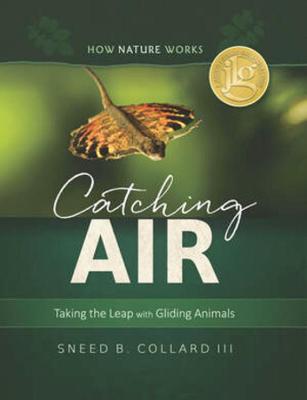How Nature Works
2 primary works
Book 0
Natural selection and speciation are all but ignored in children’s nonfiction. To help address this glaring deficiency, award-winning children’s science writer Sneed Collard traveled to the Galapagos Islands to see for himself, where Charles Darwin saw, how new species form. The result is this fascinating story of two species of iguana, one land-based and one marine, both of which developed from a single ancestor that reached the islands millions of years ago. The animals evolved in different directions while living within sight of one another. How is that possible?
Collard uses the iguanas to explore Charles Darwin’s great discovery.
F&P Level V
Book 0
North America’s flying squirrels and Australia’s sugar gliders notwithstanding, the vast majority of them live in rainforests. Illustrated with arresting photographs, Catching Air takes us around the world to meet these animals, learn why so many gliders live in Southeast Asia, and find out why this gravity-defying ability has evolved in Draco lizards, snakes, and frogs as well as mammals. Why do gliders stop short of flying, how did bats make that final leap, and how did Homo sapiens bypass evolution to glide via wingsuits and hang gliders—or is that evolution in another guise?

